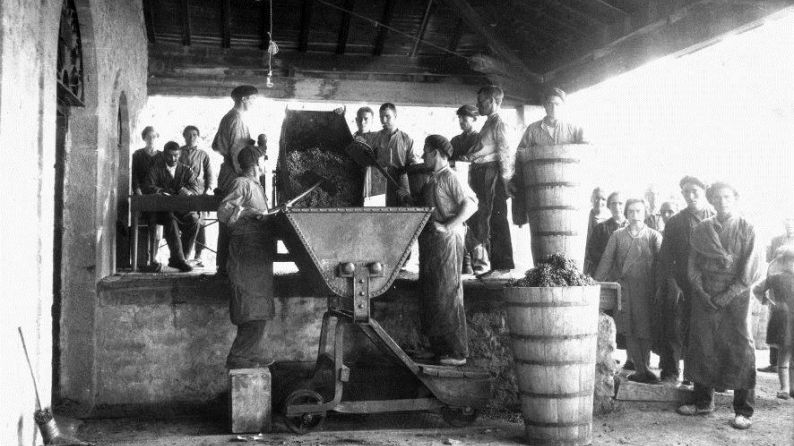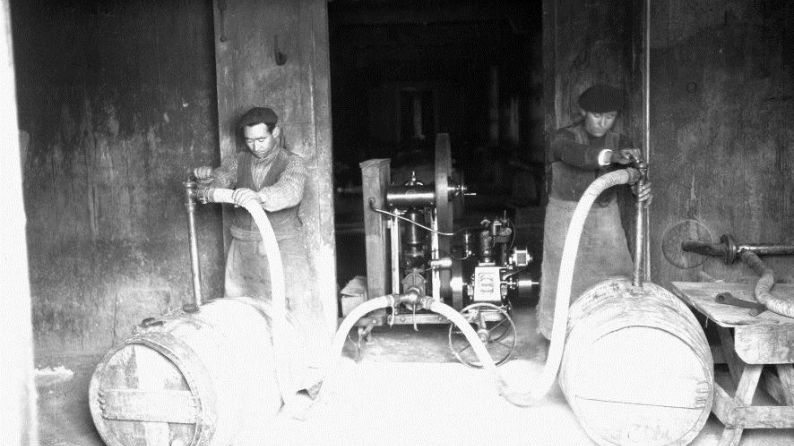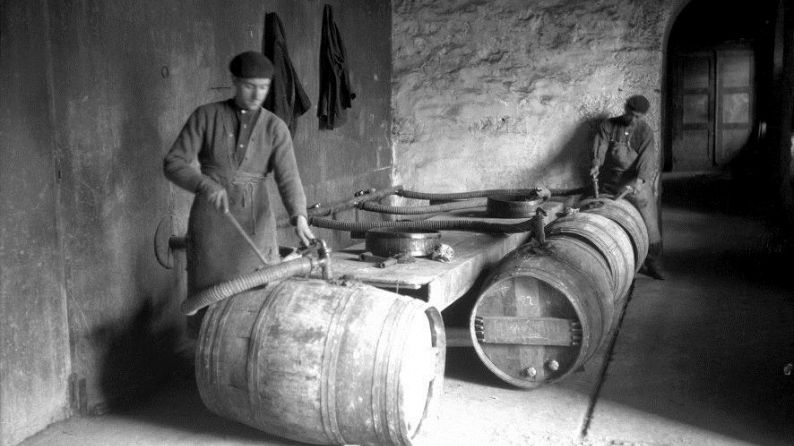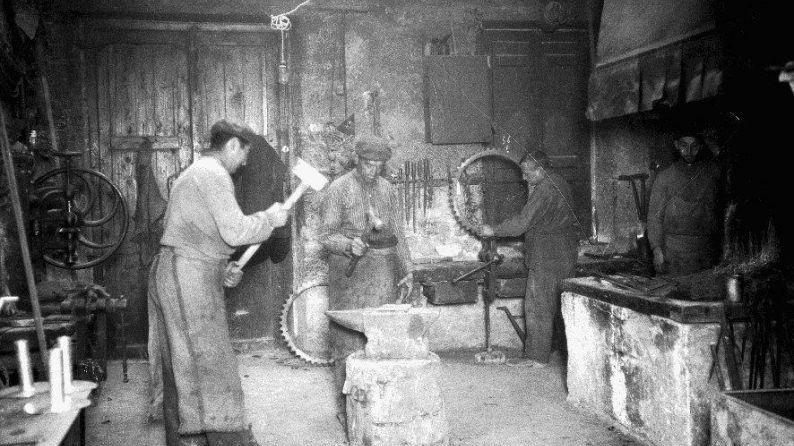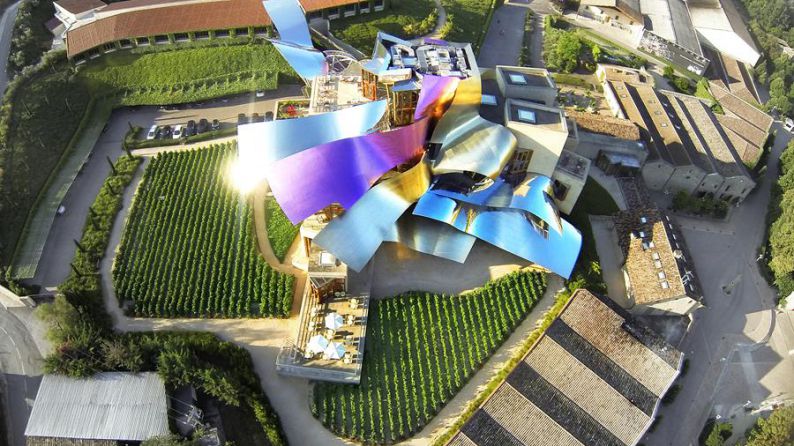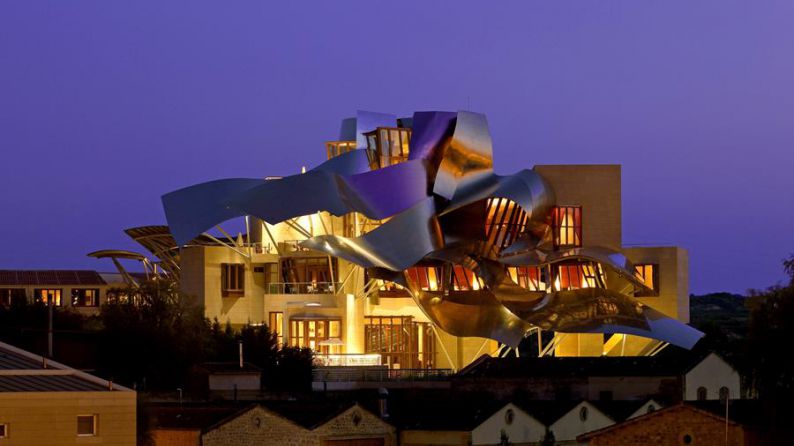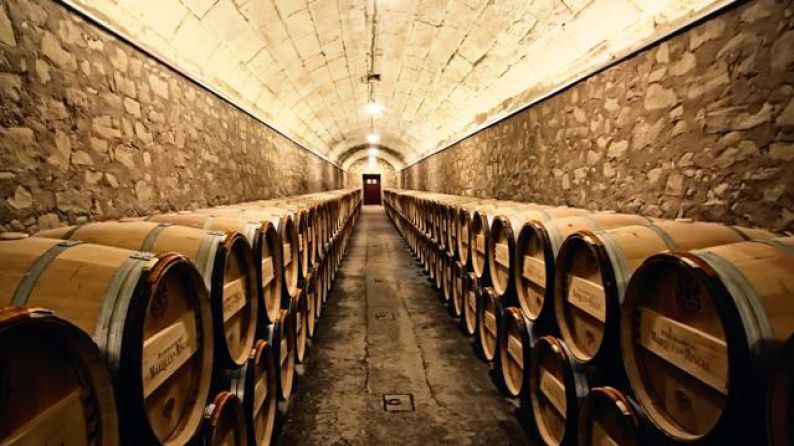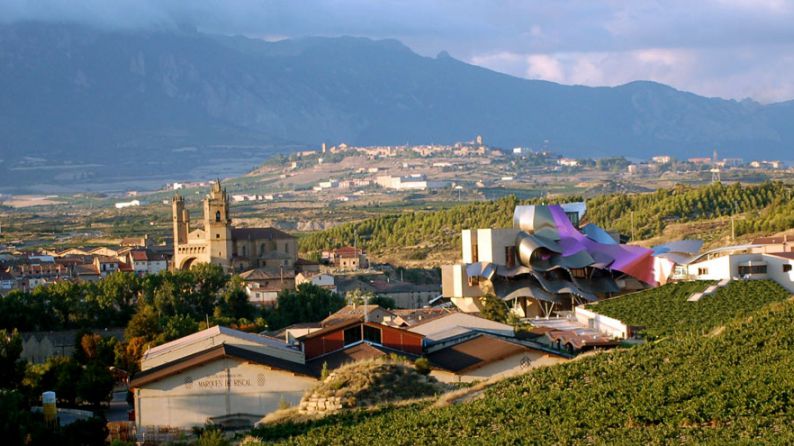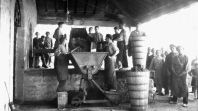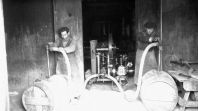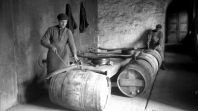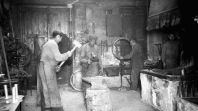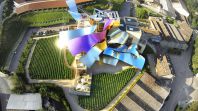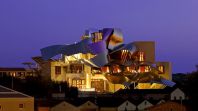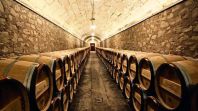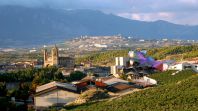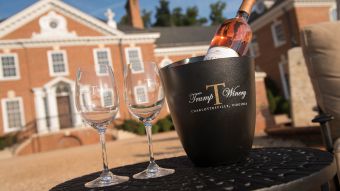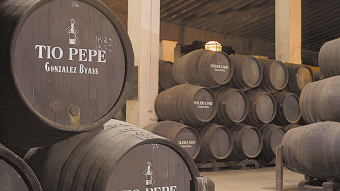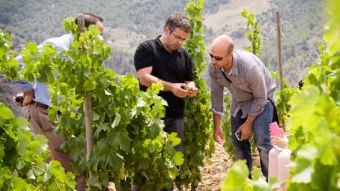Herederos del Marqués de Riscal
The famous Rioja wine was born in Elciego, a small village in the province of Alava, in the mid-nineteenth century. A lady - Doña Marceliana Hurtado de Amezaga – played a part in its creation, but it was her nephew - Don Camilo, the Marqués de Riscal - diplomat, journalist, freethinker, a man ahead of his time, residing in Bordeaux, who was at the origin of the important French influence that led to the emergence of modern Rioja.
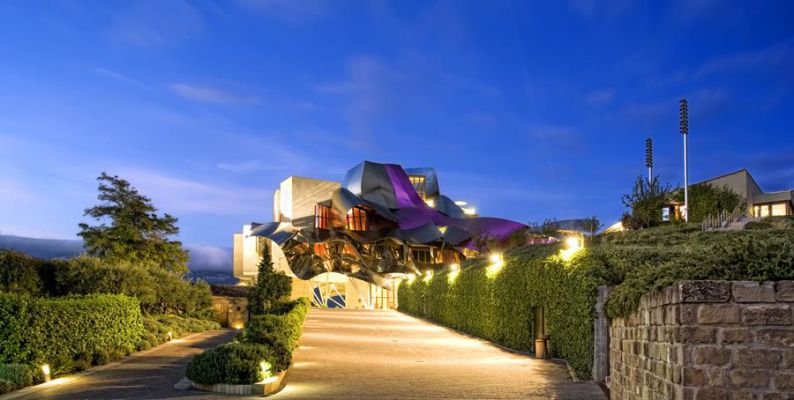 Entrance of Hotel Marqués de Riscal
Entrance of Hotel Marqués de Riscal
Guillermo Hurtado de Amezaga and his six sisters were descendants of an aristocratic family originating from Vizcaya, but resident in Vitoria since the late 18th century. The Marqués de Riscal title was inherited by Guillermo, the eldest son, who, because of his Liberal views and financial reasons, moved to Bordeaux in a self-imposed exile. Here, his business activity bore no relation whatsoever with wine – surprising as it may seem – as he was involved in finance and trading, an activity which was far more important in those days. In Bordeaux, Guillermo raised his two sons, Camilo, our hero, and José.
Meanwhile, three of Guillermo’s six sisters moved to Elciego, prompted by their close friendship with the illustrious Ruiz de Ubago family, who owned land in Elciego and Lardero. In 1789, Juan Antonio Ruiz de Ubago, a gentleman of fragile health, moved from Malaga to Elciego, where he was the owner of one of the biggest estates in the area. Two years before his death in 1847, Ruiz de Ubago, a childless widower, drew up his will, in which he divided his estate: one half was to go to a nephew who lived in Puebla de Labarca, and the other half to Marceliana Hurtado de Amezaga, the only living Hurtado de Amezaga sister of the three who had moved to Elciego. If she died, her brother Guillermo, the Marqués living in Bordeaux, was to inherit.
Marceliana Hurtado de Amezaga took over the land and vineyards and produced “2,818 cántaras of red wine“ in the traditional facilities of the “covachonas”, the cellars located in the popular Barruihuelo district of Elciego since the start of the century. Using traditional methods passed on from the Ruiz de Ubago family, she vinified and made wines for early drinking because, back in those days, they didn’t know how to age the wine. At the time of her death in 1858, we imagine that the Marqués de Riscal brand, as such, still did not exist.
The official birth of Marqués de Riscal
As per the provisions of the will, Marceliana’s brother inherited and managed the Ruiz de Ubago estate, from Bordeaux. At the time, wine over-production was a serious issue in the Province of Alava and had been so for several decades. The local government council decided to tackle the problem, which would require them to find a way of ageing the wines and facilitating their transport and sale. Don Guillermo, who, as we already know, resided in Bordeaux at the time, decided that his son, Camilo, was the ideal man for the job.
Camilo was dynamic, well educated and well connected in the diplomatic world. He was also a polyglot, writer, essayist, journalist, founder of the El Día newspaper and the importer of the first rotary printing press in Spain. He and the local deputy general, Pedro Egaña, set about putting the wheels of Rioja’s modernization into motion. Commissioned by the local government, he hired an oenology expert from Bordeaux by the name of Jean Pineau, winemaker at Château Lanessan, who moved to Alava to show them how to vinify “wine for ageing”.
This oenological mission was the foundation stone of the now famous Rioja wine. They started by importing 9,000 French vines for experimental purposes. In 1862, the first Médoc-style vinifications commenced under the guidance of the French winemaker. But a few years later, due to the investment required by the facilities and the barrels, the fact that the product could not be sold within a few months, and the difficulty of maintaining funding, the Alava government council had to dispense with the services of Monsieur Pineau.
The visionary Marques
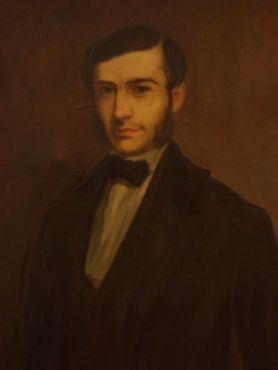 Don Camilo Hurtado de AmezagaA man of vision, Camilo Hurtado de Amezaga, now the Marqués de Riscal, had complete faith in the new techniques and had therefore decided to procure the services of the great French winemaker for himself. This was to be the birth of the Marqués de Riscal brand.
Don Camilo Hurtado de AmezagaA man of vision, Camilo Hurtado de Amezaga, now the Marqués de Riscal, had complete faith in the new techniques and had therefore decided to procure the services of the great French winemaker for himself. This was to be the birth of the Marqués de Riscal brand.
Don Camilo built a new winery entirely out of ashlar masonry with enormous cellars for ageing the wine, the exact replica of the French model, and he also built a cooperage where the first “Bordeaux barrels“ were produced. His first wines were bottled in 1862 and only a couple of years later had obtained the Diploma of Honour at the Exhibition of Bordeaux 1865, followed by Bayonne 1865, Dublin 1866, Paris 1872, Vienna 1873 and a gold medal in Paris in 1878.
Marqués de Riscal was the first non-French winery to receive such awards, which have been proudly displayed on the labels of the classic Marqués de Riscal wines ever since.
The bottles’ gold wire-mesh net (to prevent counterfeiting now that the success of the wines had made this a tempting proposition), has also been part of the company’s brand identity since that time.
Camilo Hurtado de Amezaga realized that the success of the business lay in export, as the Spanish market of the time was not yet ready to buy the new, more expensive fine wines. He invested large sums of money in setting up a distribution network.
Three Centuries of innovation
Don Camilo died in Seville in 1888. The “Heirs of the Marqués de Riscal“ have remained true to his principles of innovation, export, research and modernization ever since. In the late 20th century, the company launched the splendid Baron de Chirel, a new brand in a more modern style and unlike that of its siblings. In the early 21st century, it embarked on the construction of the Ciudad del Vino (City of Wine), the beautiful building designed by Frank Gehry which is known and admired around the world.
The ability to perfectly combine tradition and modernity is an inherent talent of this great company, still owned by the heirs’ families today. The contrast of the ancient stone masonry of “La Catedral” (one of the oldest cellars in the winery and home to three centuries’ worth of vintages, going back as far as 1862) with Gehry’s revolutionary edifice of gold and red anodized titanium and stainless steel, demonstrates that the past and future can joyfully co-exist.
Another of the company’s great accomplishments resulting from its passion for combining past and present, is the lovely conversion of one of the company’s oldest cellars, dating from 1833, into a space equipped with the very latest technology.
Marqués de Riscal’s consistent quality, continuous innovation and focus on export have lead to this great company (entirely Spanish, despite its early French influences), being recognized among “The 10 World’s Most Admired Wine Brands“.


